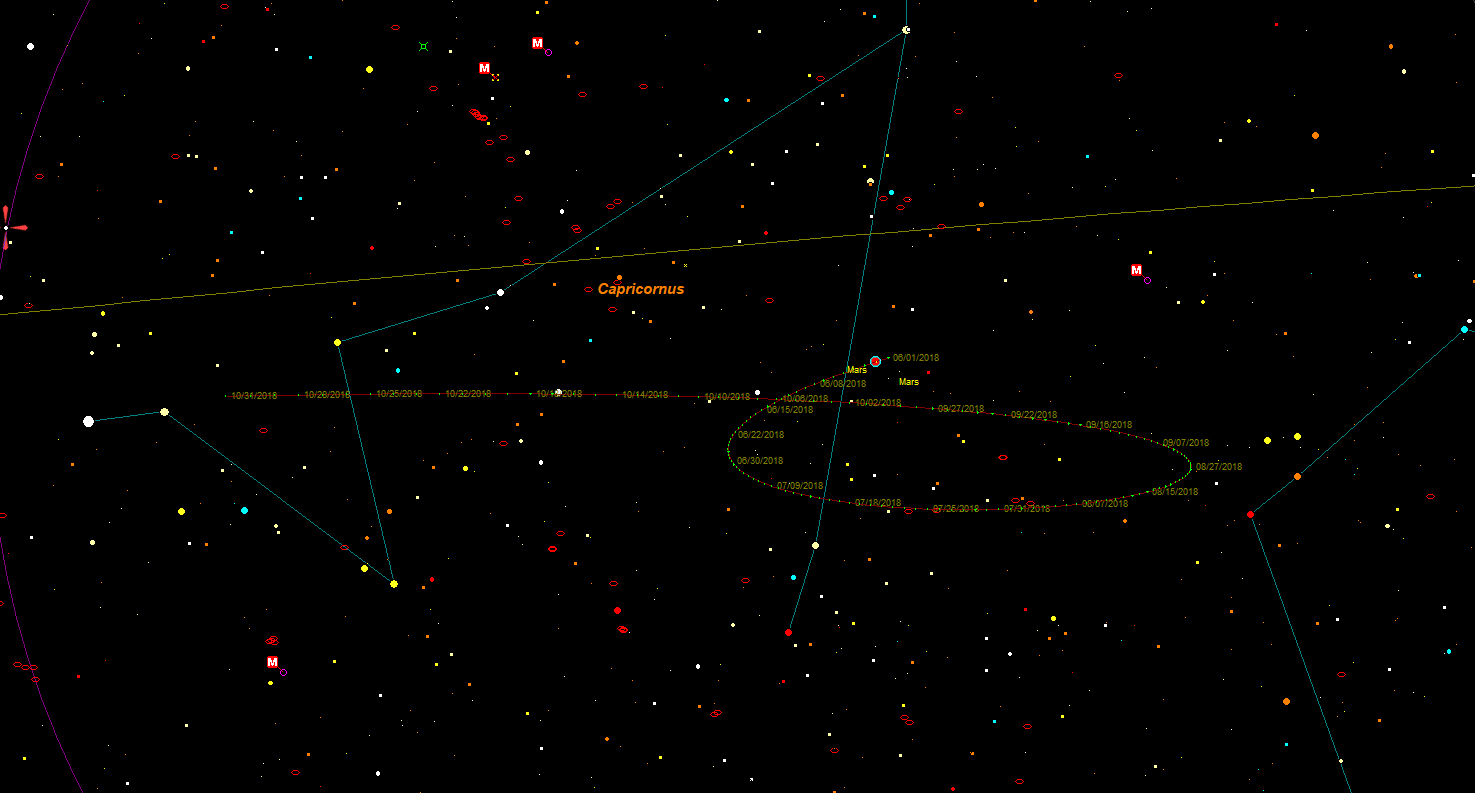The excitement is definitely building.
Mars, the red planet, is coming to opposition on the 27th of July.
And who doesn’t love looking at Mars?
Due to its close proximity to Earth, one more planet away from the Sun, it only comes to opposition every two years. This is the time when Mars (and all the other outer planets) are seen at their best, as they are then at their closest to Earth.
Unfortunately, for those of us in the UK, (or anywhere further north) although this is one of the best oppositions for quite a while, when Mars is even closer than recent previous encounters, therefore its apparent size being much bigger, it is going to be very low down in the southern sky at this time. This means that the Earth’s atmosphere will do its very best to prevent us from seeing some of the smallest detail on the disk.
This isn’t helped by Mars being quite small anyway. As Earth and Mars app approach one another over the next few weeks, the apparent size of the disk grow very quickly as shown in the diagram below. The date in yellow is the day of opposition. Diagram created using Stellarium.

Below is Damien Peach’s spectacular images taken over the past few weeks showing how much Mars has already grown so far this year. Just WOW!!!
Click here or on the image to see his well-deserved APOD entry.
Make the most of any opportunity to observe the planet for a few weeks either side of opposition as possible, to see as much of the disk as you can, while it is big, bold and easier to view.
At opposition the planet will look very bright at magnitude -2.8 and will look extremely red to the naked eye.
See if you can spot the two moos, Phobos and Deimos at this time. Theoretically, they “should” be relatively easy to spot at magnitudes 10.5 and 11.5 respectively. However, as they are orbiting very close to their bright parent, they are often lost in the bright glare.
Click here to read a Sky & Telescope article for more details about how this can be achieved.
Don’t forget Mars’ rotation period is very similar to the Earth’s, so don’t think you can go out at the same time the next night and see a different part of the disk, as only very small different portion of the disk will have rotated into view.
Have Fun.
The map below shows the retrograde loop performed by Mars in Capricornus from now until the end of October. Click on the map for a bigger view.


